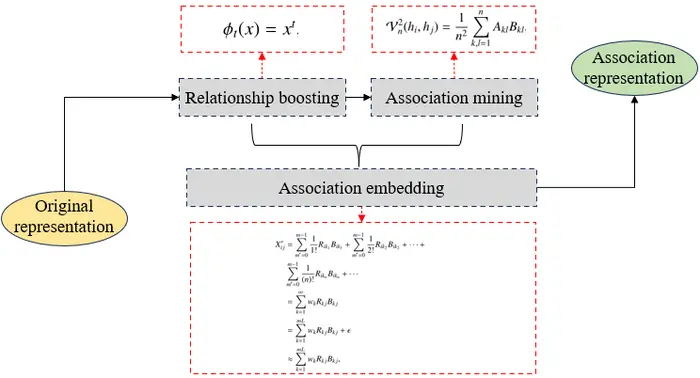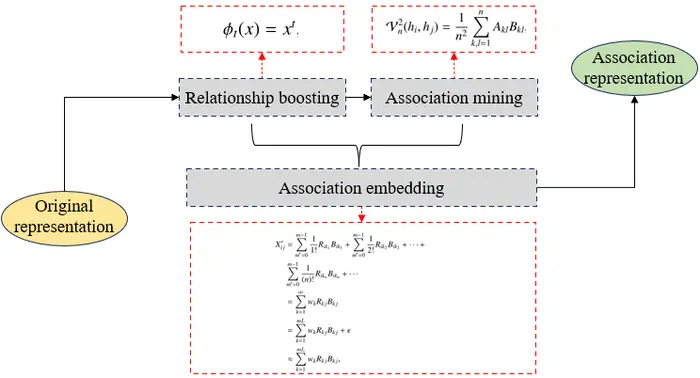A data representation method using distance correlation
Association in-between features has been demonstrated to improve the representation ability of data. However, the original association data reconstruction method may face two issues: the dimension of reconstructed data is undoubtedly highly than that of original data, and adopted association measure method does not well balance effectiveness and efficiency. Credit: Xinyan LIANG, Yuhua QIAN, Qian […]

Association in-between features has been demonstrated to improve the representation ability of data. However, the original association data reconstruction method may face two issues: the dimension of reconstructed data is undoubtedly highly than that of original data, and adopted association measure method does not well balance effectiveness and efficiency.

Credit: Xinyan LIANG, Yuhua QIAN, Qian GUO, Keyin ZHENG
Association in-between features has been demonstrated to improve the representation ability of data. However, the original association data reconstruction method may face two issues: the dimension of reconstructed data is undoubtedly highly than that of original data, and adopted association measure method does not well balance effectiveness and efficiency.
To solve the problems, a research team led by Yuhua QIAN published their new research on 12 Mar 2024 in Frontiers of Computer Science co-published by Higher Education Press and Springer Nature.
The team proposed a novel association-based representation improvement method, named as AssoRep. AssoRep first obtains the association between features via distance correlation method that has some advantages than Pearson’s correlation coefficient. Then an improved matrix is formed via stacking the association value of any two features. Next, an improved feature representation is obtained by aggregating the original feature with the enhancement matrix. Finally, the improved feature representation is mapped to a low-dimensional space via principal component analysis.
The effectiveness and efficiency of AssoRep is validated on 120 datasets for classification task.
Future work can focus on tensorizing association-based representation, generalizing the AssoRep with cause and effect among features.
DOI: 10.1007/s11704-023-3396-y
Journal
Frontiers of Computer Science
DOI
10.1007/s11704-023-3396-y
Method of Research
Experimental study
Subject of Research
Not applicable
Article Title
A Data Representation Method Using Distance Correlation
Article Publication Date
12-Mar-2024
What's Your Reaction?

































